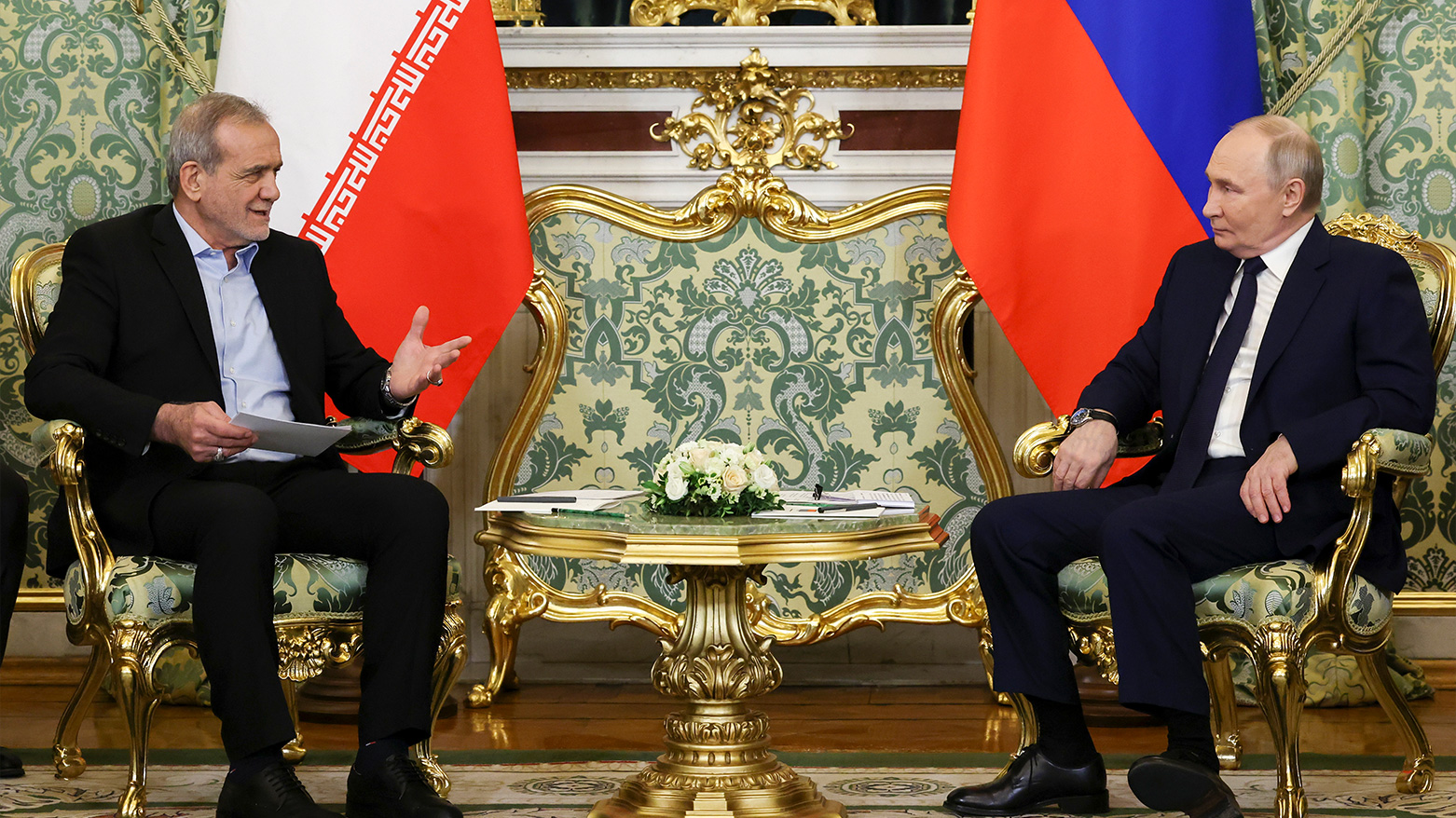
Russian President Vladimir Putin welcomed his Iranian counterpart, Masoud Pezeshkian, on Friday to formalize a significant agreement between Moscow and Tehran.
According to the Kremlin, this “comprehensive strategic partnership” aims to elevate the collaboration between the two nations to unprecedented heights.
As detailed by the Iranian embassy in Russia via Telegram last week, this pact focuses on “economic and commercial cooperation in the fields of energy, environment, and defense and security issues.”
While the specifics of the agreement remain somewhat vague, it is noteworthy that Moscow had previously established a treaty with North Korea under the same title in 2024.
Their existing relationship is based on a document from 2001, which they have updated at regular intervals.
Russia asserts that its forthcoming agreement with Iran, along with the already established treaty with Pyongyang, is “not aimed at any nation.”
“The treaty … is of a constructive nature and seeks to enhance the capabilities of Russia, Iran, and our allies across different regions of the globe,” stated Russian Foreign Minister Sergei Lavrov on Tuesday.
The treaty is set to be valid for 20 years, Russia’s TASS news agency reported on Tuesday, citing the Iranian ambassador to Russia Kazem Jalali.
Russian President Vladimir Putin has made building ties with Iran, China and North Korea a cornerstone of his foreign policy as he seeks to challenge what he calls as a US-led “global hegemony”.
Both Russia and Iran are under heavy Western sanctions that include restrictions on their vital energy industries.
At a summit of the BRICS group in Kazan last year, Putin told Pezeshkian he valued “truly friendly and constructive ties” between Russia and Iran.
Iran has also sought closer ties with Russia, after suffering a series of foreign policy setbacks last year.
Historically, Russia and Iran have had a tumultuous relationship, marked by conflicts in the 18th and 19th centuries, during which the Russian Empire seized extensive territories in the Caucasus and Caspian regions from Persian rulers.
In the early 20th century, Russian forces occupied significant portions of northern Iran, but their presence ended with the 1917 Bolshevik Revolution.
The Soviet Union, alongside Britain, invaded Iran during World War II, an event that still stirs painful memories in Tehran.
During the Cold War, tensions escalated as Tehran aligned with the U.S. under the Shah.
Following his overthrow in the 1979 Islamic Revolution, Ayatollah Ruhollah Khomeini condemned the U.S. as the “Great Satan” and labeled the USSR as the “Lesser Satan.”
However, relations between Russia and Iran began to improve after the dissolution of the USSR in 1991.
Moscow emerged as a vital trade partner and a major supplier of weapons and advanced technologies to Iran, which was grappling with the effects of extensive international sanctions.






